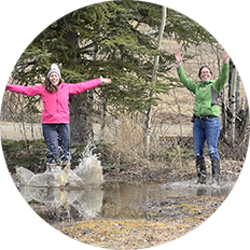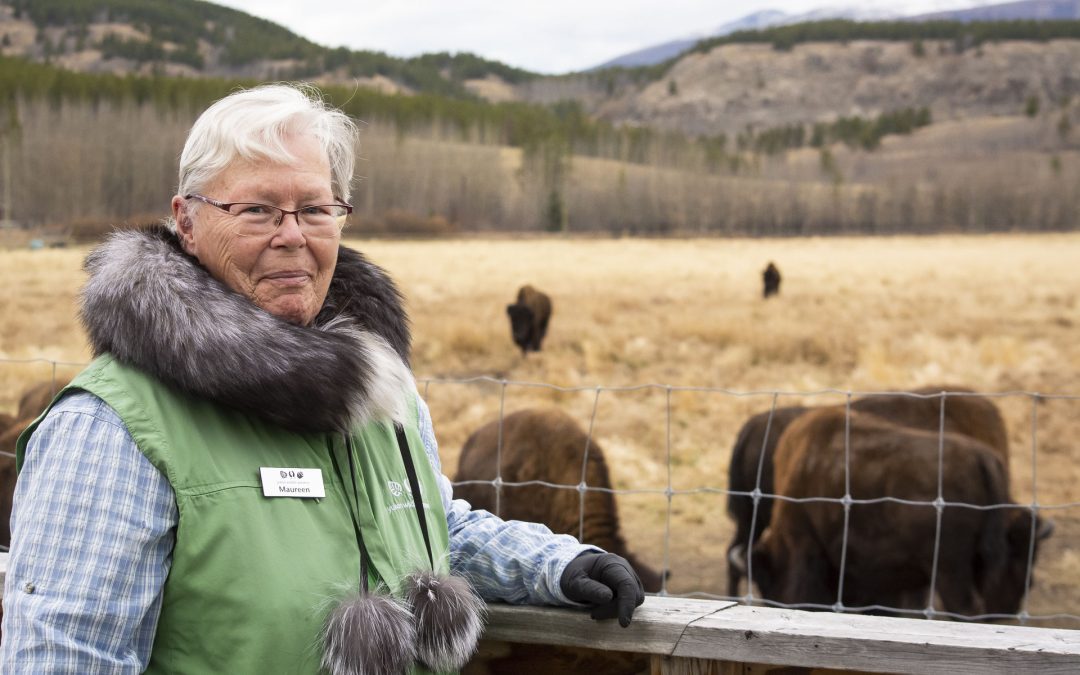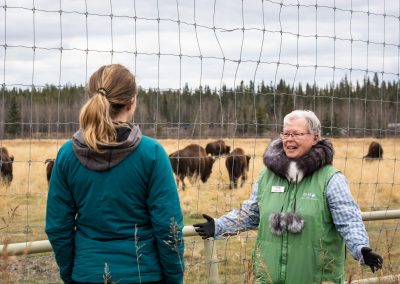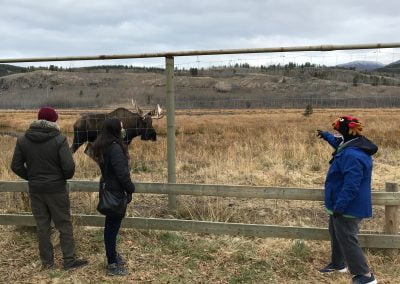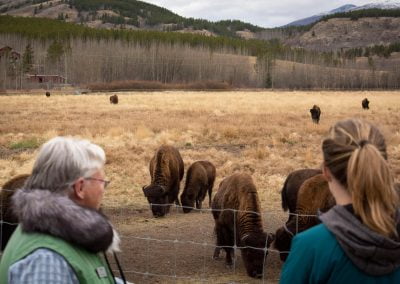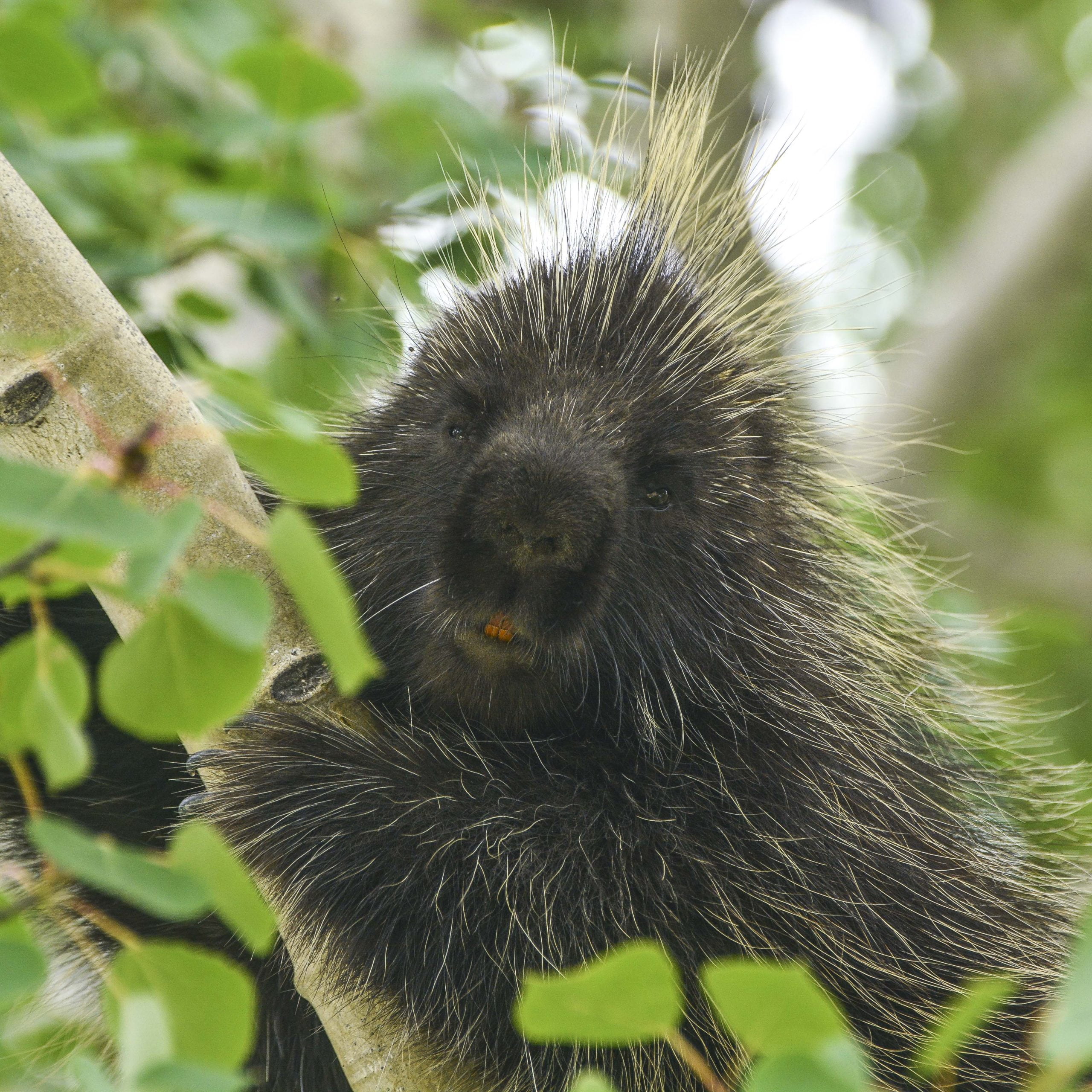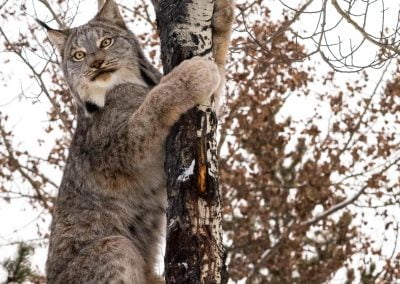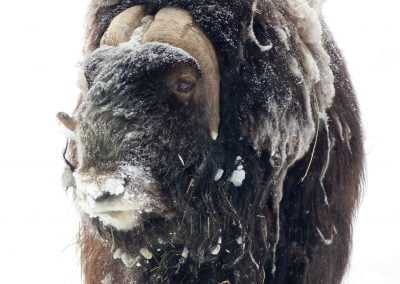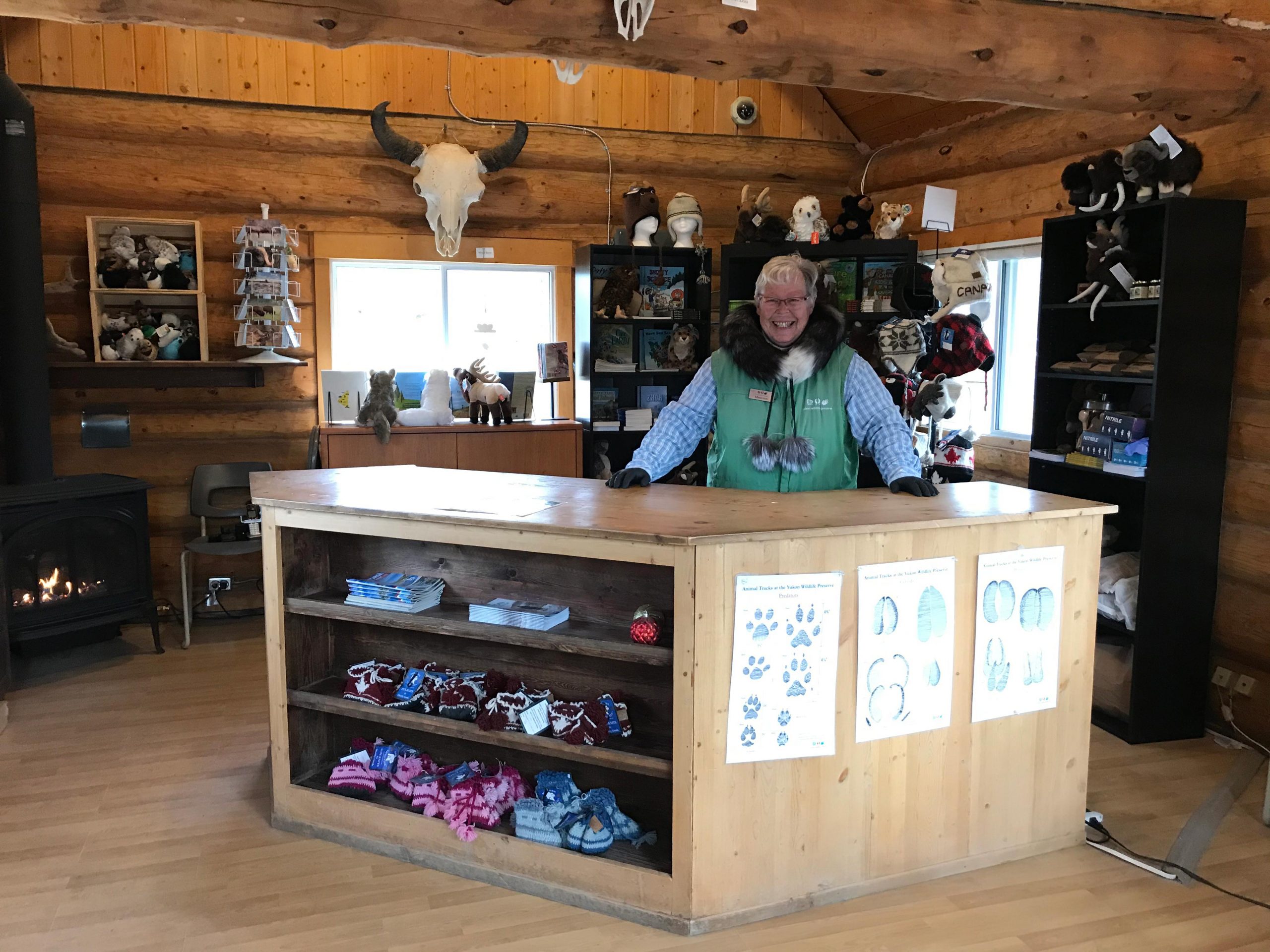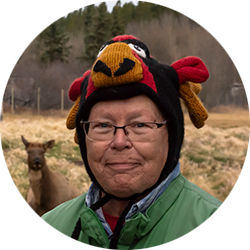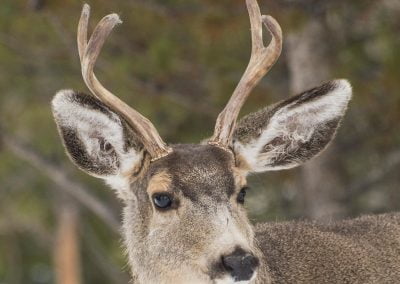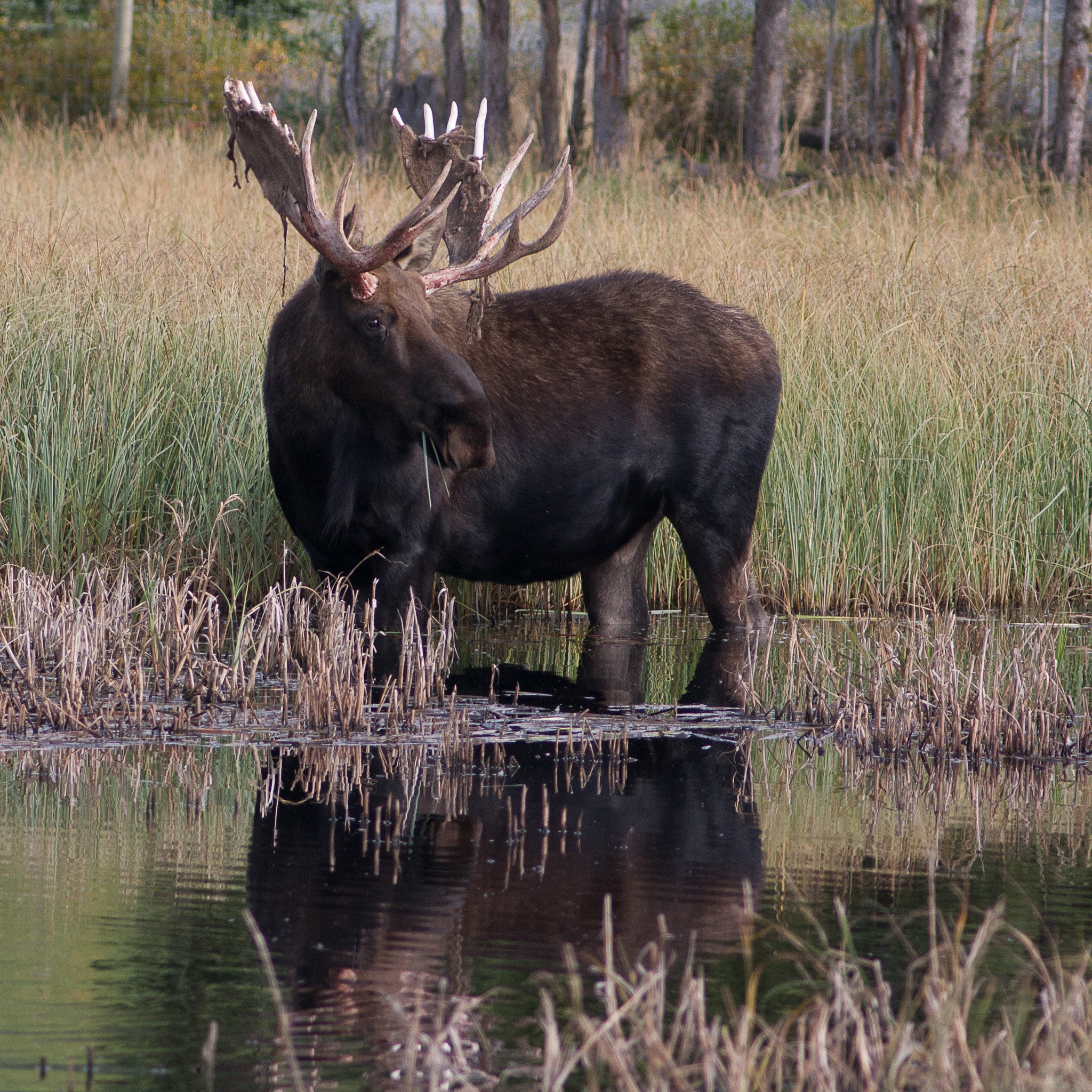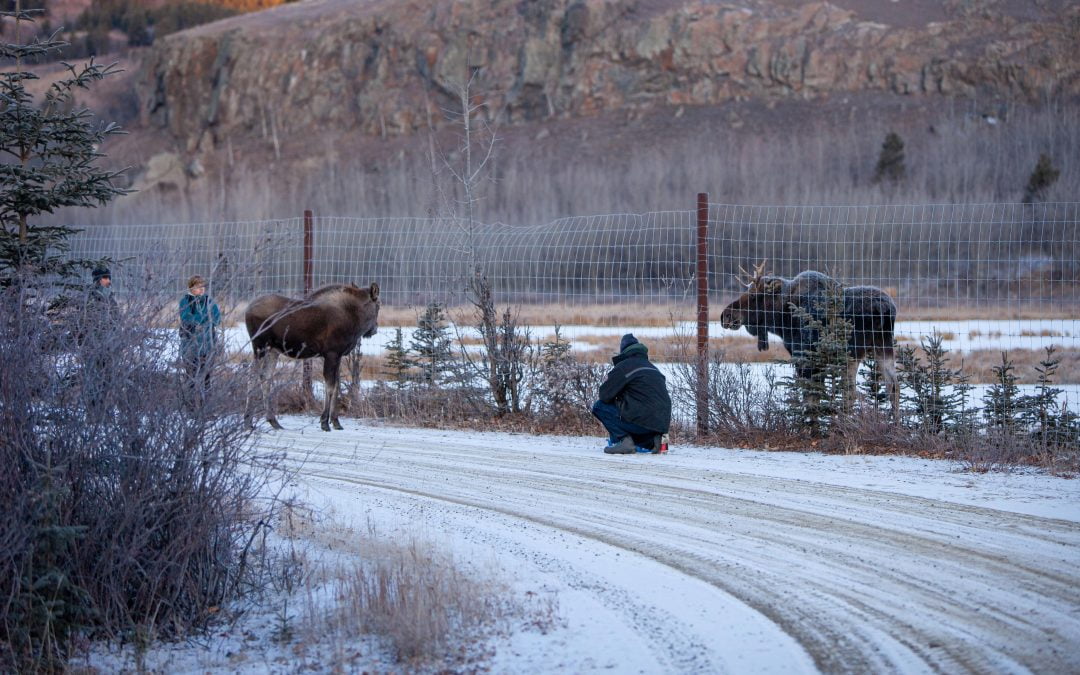
A-Moosing Move
A-Moosing Move
This story was originally published October 24, 2020 in the e-blast newsletter to Yukon Wildlife Preserve’s membership.
Are you a member but don’t receive these email Newsletters? Contact us at info@yukonwildlife.ca to update your email preferences.
Banner photo credit: J. Paleczny
Now you might be wondering how that happens, and safely. The wide roadways, snaking in a figure-8 through the Preserve are not only a means for you to explore the Preserve and its wildlife residents, they’re also the way in which we, using a series of gates and the fencing for each habitat, guide animals from one area to another.
This little male moose will spend time alone in this intermediate habitat (in between the 2 other males in the marsh habitat and the 2 females in the adjacent habitat) before being introduced in with the females.
He’s quite skittish, very cautious of new surroundings and people. While he remains in this secondary, temporary home a stand-off barrier is in place to ensure he feels he has enough space to be comfortable and explore his surroundings while reducing stress as he gets to know you, our visitors.
A trip down Memory Lane: remember when this moose orphaned in July moved to his temporary off-display habitat? And here’s the early October pre-A-Moosing Move update thanks to CBC Yukon!

Lindsay Caskenette
Manager Visitor Services
Lindsay joined the Wildlife Preserve team March 2014. Originally from Ontario, she came to the Yukon in search of new adventures and new career challenges. Lindsay holds a degree in Environmental Studies with honours from Wilfrid Laurier University and brings with her a strong passion for sharing what nature, animals, and the environment can teach us.










